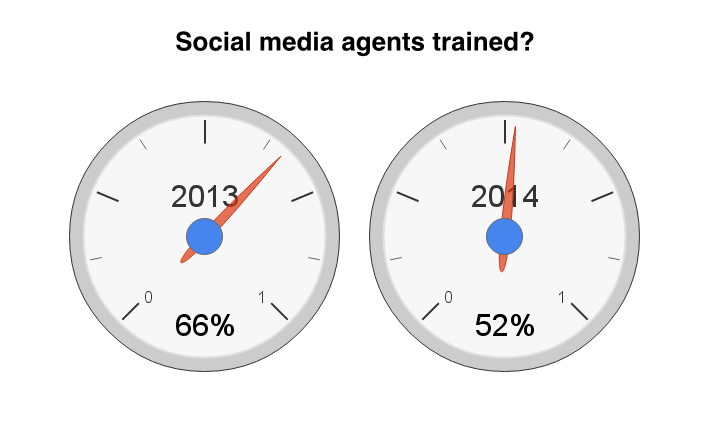The following post is a guest blog written by Jeff Toister, President of Toister Performance Solutions which helps clients improve customer service through training, development, and consulting. The original post can be seen on Jeff’s blog.
Social customer care should be entering an age of maturity.
The dominant social media channels have been around for awhile. Facebook is more than ten years old. Twitter is now nine.
In reality, best practices are still evolving.
Here are three trends from the 2014 Customer Experience Management Benchmark (CEMB) study that’s co-produced by Executives in the Know and Digital Roots. These trends all seem to indicate that companies are still trying to find their way.

Trend #1: Channel Priorities
You can tell a lot about a company’s social media priorities by who owns it.
The CEMB revealed that customer care is an owner or co-owner of social media channels in only 50 percent of companies.

Why is this happening?
One explanation could be that corporate CEOs still don’t understand social media. A 2014 Domo study revealed that 68 percent of Fortune 500 CEOs have no presence on social media.
Another explanation is an apparent lack of social media adoption by customer care representatives themselves.
The Twitter backchannel was a virtual ghost town at ICMI’s 2015 Contact Center Expo & Conference. Only a few highly active participants regularly chimed in.
Likewise, when I conducted an informal poll in my conference sessions, less than 10 percent acknowledged they were Twitter users.
We can’t win the social customer care game until we’re actually playing the game.
Trend #2: Wavering Commitment
Many companies are experiencing a commitment problem when it comes to social customer care. They’re just not as invested in social like they are in other channels.
According to the CEMB, the growth of social media customer care has slowed.

And, fewer companies are training their social media agents.

Even worse, many companies are almost completely ignoring social media as a customer care channel.
Here are two stats that really jump out:
- – Only 14% of companies measure CSAT via social (Source: CEMB)
- – The Top 100 brands ignore 78% of Tweets (Source: Freshdesk)
Brands would love us all to have social media conversations about how great they are. They encourage us to share our positive thoughts using their carefully selected hashtags.
But, they can’t have it both ways. If they want us to engage with them, they’d better engage with us.
Trend #3: Strong Alternatives
Other customer care channels are a much higher priority than social.
The CEMB report revealed that social media is the preferred customer care channel for only 9 percent of customers.
Phone is still the top channel. According to ICMI Senior Analyst Justin Robbins, self-service is the fastest growing channel.
My own 2014 study of customer care via Twitter revealed that most customers view Twitter as a secondary channel, not a primary one. They only take to Twitter when another channel has failed them.
Another Twitter study I did earlier this year suggested that the impact of an upset customer ranting online may be overestimated. Or, viewed another way, a customer who receives poor service via any other channel is just as dangerous.
What’s Next?
Sadly, I could easily cut and paste the conclusion from a similar post I wrote a year ago.
It’s about time more companies figure it out. Key areas for improvement include:
- – Faster response times
- – Fewer ignored questions
- – Consistent service quality across all channels
The few companies that get it right can really stand out from the rest that don’t.
There are a few additions, too:
- – Customer care teams must gain a seat at the table.
- – Customer care professionals must personally engage with social.
- – Organizations must provide their agents with adequate training.
Perhaps most importantly, organizations must strive for consistency across all channels. A service failure can be just as damaging over the phone, in person, or via social media.






